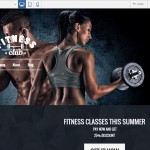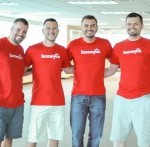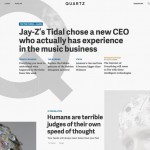Wrap’s Plan To Reinvent The cellular web: Flipbooks
Eric Greenberg and Mark Rolston assume HTML5 flipbooks are the future of cellular content material. Are they right?
 Mark Rolston, the legendary ex-chief inventive officer of Frog and the pinnacle of Argodesign, is betting large on flipbooks. along with a number of other Silicon Valley veterans, he’s working on a new startup called Wrap that is adapting the outdated concept to a newfangled world of smartphones and tablets.
Mark Rolston, the legendary ex-chief inventive officer of Frog and the pinnacle of Argodesign, is betting large on flipbooks. along with a number of other Silicon Valley veterans, he’s working on a new startup called Wrap that is adapting the outdated concept to a newfangled world of smartphones and tablets.
the corporate, which quietly launched prior this year, creates a content device that lets company customers quickly construct mobile-centric mini websites that can simplest be browsed web page after page—like a e book.
initial use circumstances for Wrap’s platform, CEO Eric Greenberg says, embrace the whole thing from building product catalogs to adventure courses. And while admittedly bizarre, constructing flipbooks for smartphones works significantly better than one would suppose. probably the most samples I used to be given, a digital catalog for wedding-centric e-commerce outfit Loverly, works in a similar fashion to its paper identical. You flip from page to page sequentially (but vertically), seeing the entire firm’s choices in a ebook-like style. then again, there may be one crucial difference between a conventional tome and this digital flipbook: Wrap’s platform lets firms embed video, e-commerce, geolocation, and customer support content material within the web page. the usage of Wrap’s analytics machine, brands can see precisely where in a flipbook customers stop studying and leave—data a good way to for sure lend a hand firms revamp their flipbooks and preserve users for longer sessions of time. In change, although they lose some shopping autonomy, the reader gets what’s arguably one of the smoother content material-searching experiences HTML5 can supply for mobile users.
Wrap was once at first funded with $2.5 million of Greenberg’s own cash (the founding father of Acumen Sciences, Scient, and Viant, he used to be some of the perfect known names of the preliminary Nineties tech growth) and just lately concluded a $three.5 million series A. the corporate’s on-file purchasers embody CBS’s CNet, Loverly, Raen shades, StumbleUpon, and trace Water. Wrap is believed to be actively pursuing shoppers in the media and sports activities spaces, as well.
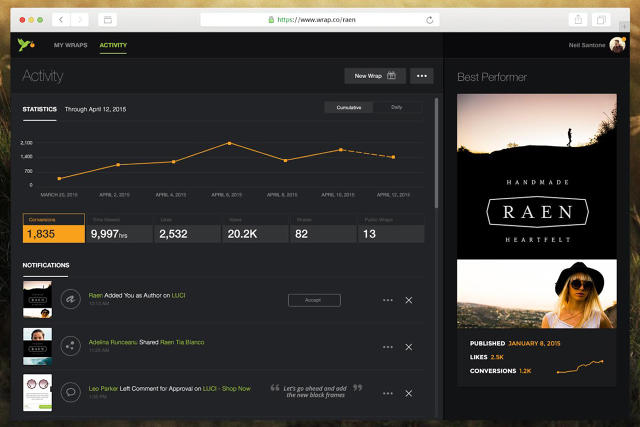
when I spoke with Rolston, he was once thinking about future sports uses for the platform. the example Roston (a just right Texan) gave me was producing guides to soccer games for ticket consumers: “I want to understand where the sport is, I need a ticket, parking assistance, possibly to buy some shirts or swag on the sport, and search for my seat. I flip the web page and there’s my ticket; I flip once more and there are seating instructions.”
every other case learn about Greenberg and Rolston are pushing closely is digital receipts. of their vision, companies will ship Wrap-generated URLs to clients that include each receipts from the e-commerce web site or POS, product and guarantee information, and even coupons for associated merchandise.
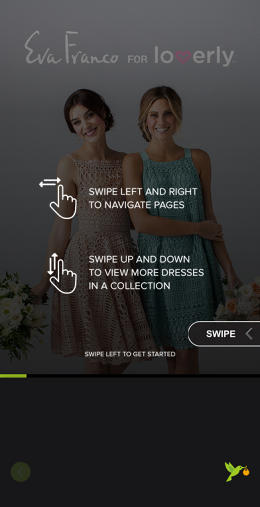
however there’s a challenge Wrap has to sort out first: The dominance of 1-shot content material publishing structures like Snapchat and Tumblr among the corporations they may be relationship, together with common content material manufacturing systems like Squarespace and WordPress that feature responsive designs that go well with both personal computer and contact displays. it’s doubtful how the corporate will sell shoppers on a content material management device (CMS) that produces websites with much less performance than an ordinary net web page.
With that said, on the other hand, the percentages are decent that Wrap can thrive and construct a distinct segment for themselves on the digital internet. Eschewing a regular net page structure (to not point out trendy UI/UX conventions of 2015 like the hamburger icon) requires no small quantity of chutzpah, and there are indubitably alternatives in creating a singular type of narrative for smartphones. For ordinary net customers, it way a brand new approach of taking a look at webpages—and a possible design trend we are going to see much more of at some point.
(153)







